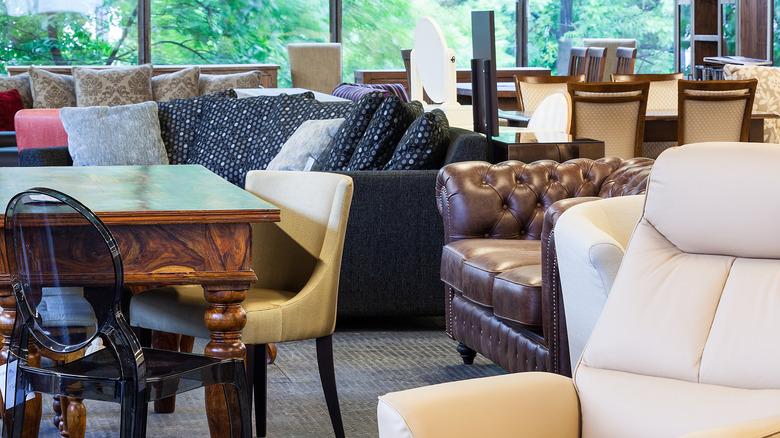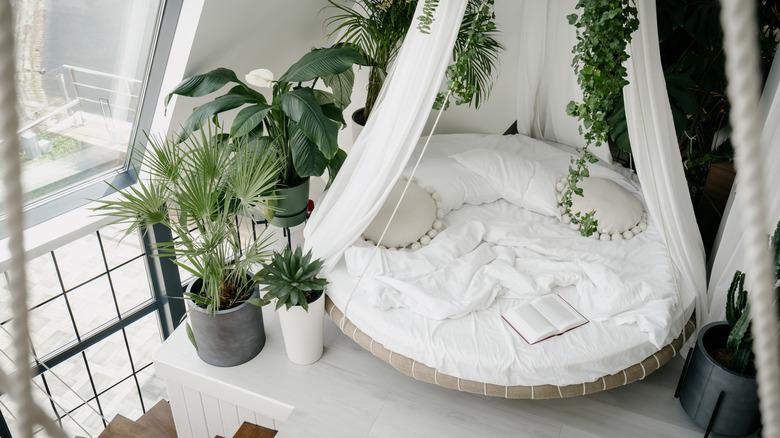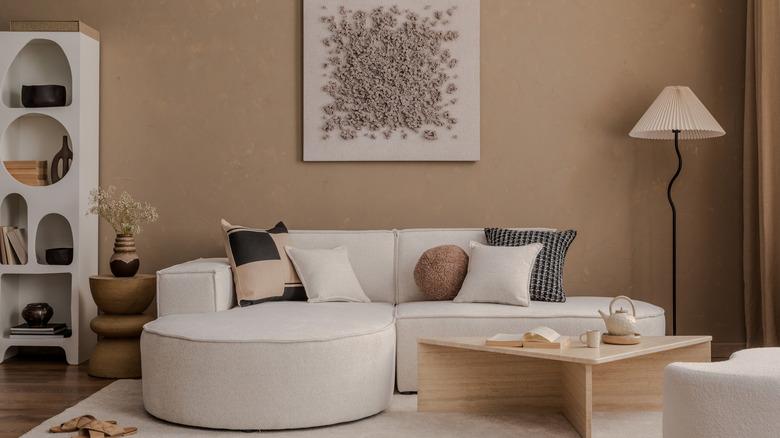The Outdated Furniture Style That's Making An Unexpected Trendy Comeback
For some time now, right angles, clean lines, and modern minimalism have reigned supreme in interior design, but you may have noticed an uptick in curved furniture lately. Dreamy boucle-covered curved couches and armchairs have suddenly flooded our Pinterest feeds, and the curves don't stop there. Rounded coffee tables, mirrors, archways, and even beds have suddenly become popular. Most of us have recently favored a more austere Bauhaus-inspired style, which leans toward the ultra-modern design principles. Unfortunately, that has left some of us with homes that look a little bit stripped down, bare, or IKEA-fied. Curved furniture adds immediate softness and fluidity to a space, helping to make it feel more inviting and organic.
It's hard to pin down an exact reason for the resurgence in curved furniture's popularity, but some interior designers point to the tumult of the era. In 2020, much of the world had to stay at home due to COVID-19 restrictions, and suddenly the boxy furniture made us feel like we were in, well, a box. Introducing softer lines made spaces feel cozier and less oppressive during a difficult time. Plus, as with all design trends, everything is cyclical. Curved furniture has gone in and out of style over the last century, regaining popularity every few decades, in the 1920s, '60s, '80s, and now.
Why did curved furniture go out of style?
Modern minimalism design became the style of choice for a number of reasons. For one, mass production had an impact on home design that can't be overstated. Stores like IKEA have allowed many people to buy decent quality furniture at shockingly low prices by relying on mass production of flat-pack furniture that requires the individual to assemble the pieces at home. Sadly, massive circular furniture pieces don't tend to ship well, while boxy furniture is well-suited to being put in a package. This may have resulted in less curved furniture options available to the masses over time.
In that same vein, curved furniture isn't layout efficient. The rounded edges take up a lot of space without providing extra function, while straight furniture can be nestled into corners or pressed directly against a wall. A rounded couch, bed, or coffee table can eat up a lot of square footage, and that's a problem if you don't have much to spare. Again, even with these considerations, some of curved furniture's decline in popularity is just due to never-ending trend cycles.
Incorporating curved furniture in your space
Curved furniture can be an amazing addition to super organic or modern homes, and can look timeless with a few considerations: stick to your genuine personal style and forgo the myth that any home design is truly timeless, and use a mix of straight and rounded silhouettes to keep the space from looking homogenous and show room-like. Love curved couches but tend to favor midcentury modern or retro design? Find a sofa in a groovy color, and leave white boucle to the minimalists. Be sure to find curved pieces that complement the pieces you already have and love, rather than trying to start from scratch. Adding rounded pieces doesn't even require buying a major piece of furniture like a couch or bed, and can be incorporated with small changes like curved mirrors or circular end tables.
Trying any design trend with taste requires balance. If you're in love with a curved sofa, consider pairing it with a more angular coffee table. Remember that doesn't mean you need to stick to a generic rectangle. You can opt for a daring, stark triangle design, like the one in the photo above, or search your local thrift store to find a unique piece. A balance of different shapes is key to making a space feel personalized and maintaining visual interest.


